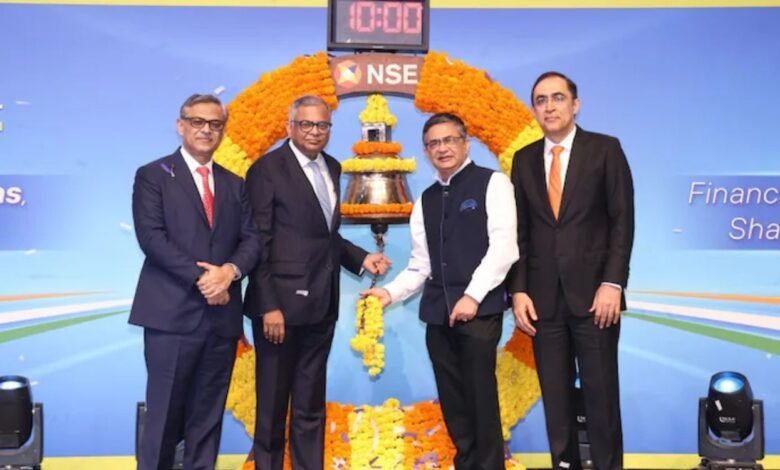
Tata Capital Makes Subdued Market Debut; JM Financial Initiates with ‘Add’ Rating, Sees 9% Upside
Mumbai: Shares of Tata Capital, the financial services arm of the Tata Group, made a tepid debut on the stock exchanges today, October 13, listing at ₹330 per share—a modest 1.2 percent premium over its issue price of ₹326. Following the listing, brokerage firm JM Financial has initiated coverage on the stock with an ‘Add’ rating and a target price of ₹360.
This target implies a potential upside of over 9 percent from its listing price. JM Financial highlighted Tata Capital’s position as a leading, diversified non-banking financial company (NBFC) with the strong backing of the Tata conglomerate and a business model heavily focused on secured lending.
Analyst Outlook and Projections
JM Financial noted that Tata Capital’s diversified portfolio, which includes retail finance (61%), SME loans (26%), and corporate loans (13%), is a key strength. “With the highest credit rating of AAA/Stable, TCL enjoys easy access to funds at lower interest rates,” the brokerage stated. However, it also pointed out that competition from banks and a higher share of secured loans result in lower Net Interest Margins (NIMs) of around 5-5.5% compared to peers.
The firm projects a 20 percent CAGR in Assets Under Management (AUM) for Tata Capital between FY25 and FY27. This growth, combined with steady operating expenses, is expected to drive a Profit After Tax (PAT) CAGR of approximately 34 percent, leading to an average Return on Assets (RoA) of 1.9% and Return on Equity (RoE) of 13.2% over FY26-27.
Investment Strategy: Buy, Sell, or Hold?
Master Capital Services weighed in, calling Tata Capital a potential long-term investment. “The company has lent out to 7.3 million customers since it started operations in 2007. It has the potential for a long-term investment in India’s growing financial services sector,” the firm said.
For investors, the advice is nuanced. “Long-term holding of the stock should be considered by investors who received IPO allotment. Meanwhile, those who didn’t get shares in the IPO can purchase when the price goes down,” Master Capital Services added.
Potential downside risks identified by analysts include an economic slowdown impacting AUM growth, delays in margin expansion, and regulatory changes.
About the IPO
Tata Capital’s much-anticipated IPO, which ran from October 6 to October 8, raised ₹15,512 crore. The issue was subscribed approximately 2 times and consisted of a fresh issue of shares worth ₹6,846 crore and an offer for sale (OFS) of shares worth nearly ₹8,666 crore by promoters Tata Sons and investor International Finance Corporation.








